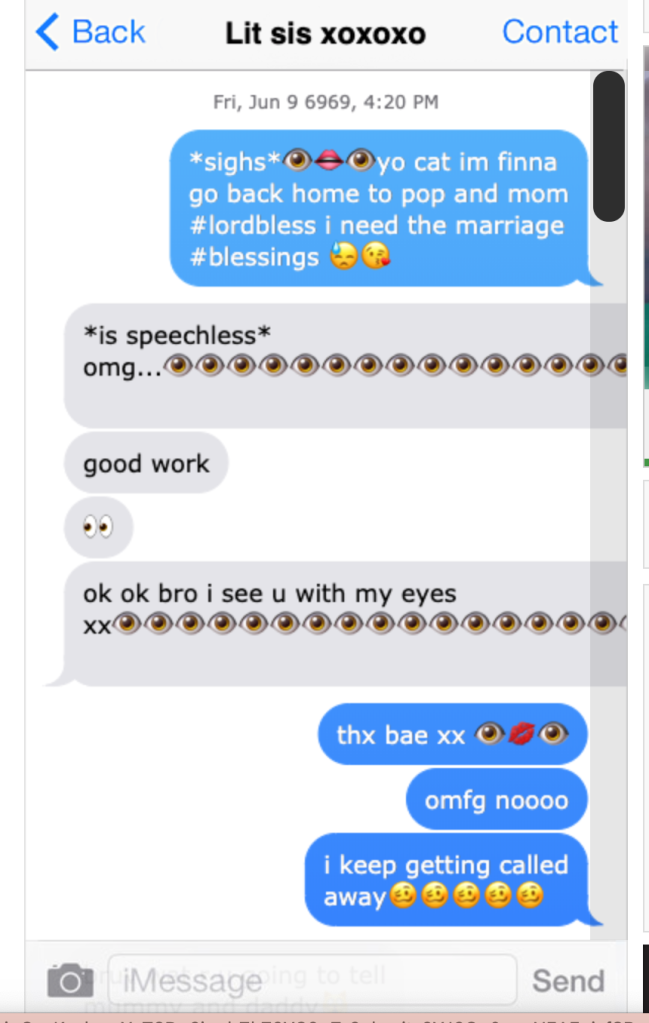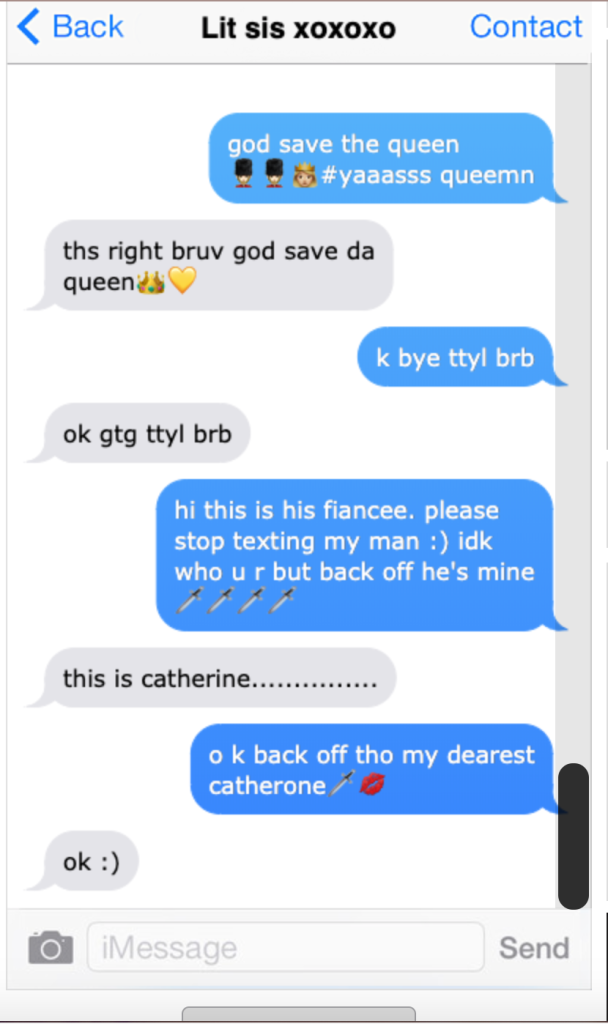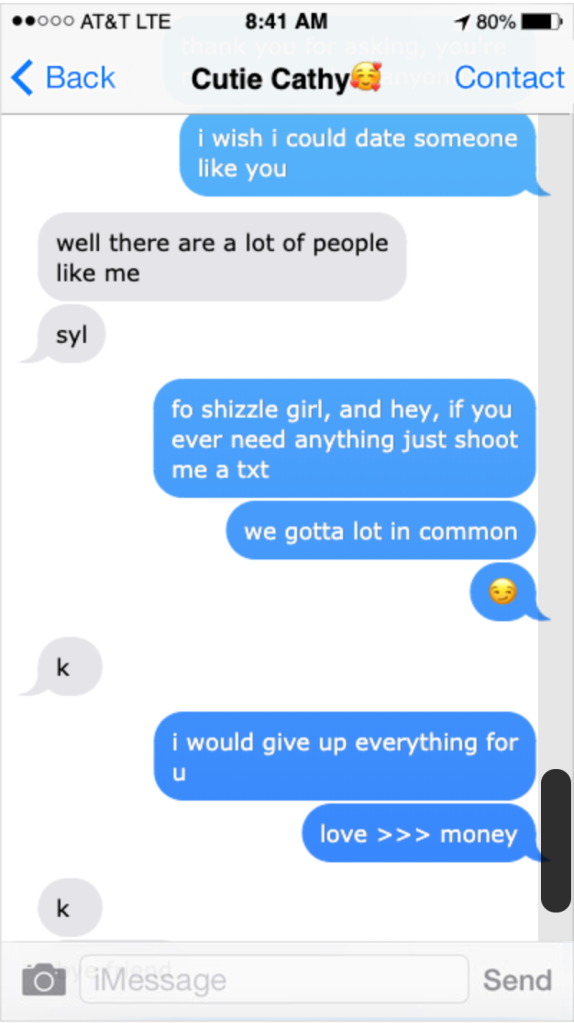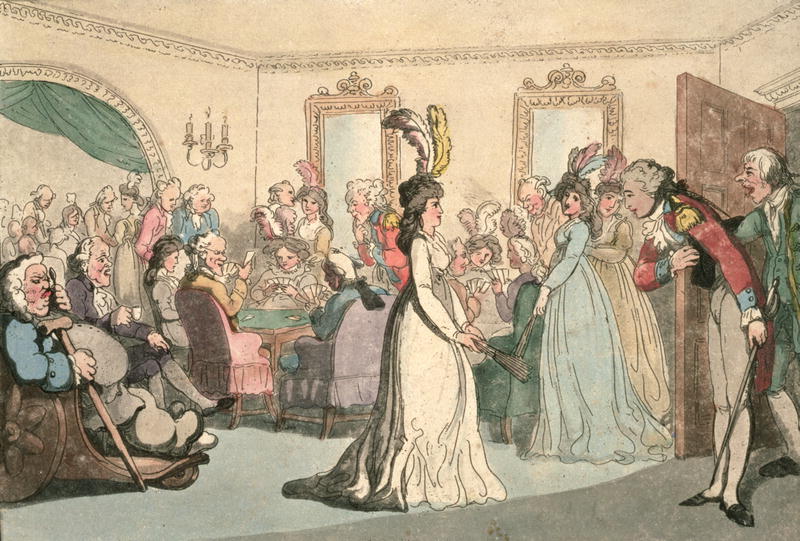Reimagine one of the following scenes from Ch. XIV and XV as a modern-day text conversation using texting language, syntax, punctuation, and emojis. Your text conversation should capture the comedic nuances of the scene and illustrate key characteristics of the two characters involved.
Conversations to adapt:
1. Henry and Catherine discussing novels (pp. 102-104)
2. Catherine and Eleanor discussing “something very shocking soon to come out in London” (pp. 107-108)
3. Isabella telling Catherine she’s engaged to James (pp. 112-113)
4. James’s farewell to Isabella, as he’s leaving to seek his parents’ approval for his engagement (p. 115)
5. John’s farewell to Catherine (pp. 117-118)
6. Your choice! Choose one of the above conversations
7. Your choice! Choose one of the above conversations
Step 1: As a group, re-read your scene and discuss what’s happening in it.
Step 2: Discuss the conversation’s subtext and satirical elements to ensure everyone in the group is on the same page about what’s happening and why it’s funny.
Step 3: Work together to compose a text conversation reimagining your assigned scene. Create this conversation using the website iphonefaketext.com. You should use your computer instead of your phone for this activity, so to use emojis, you’ll need to copy and paste emojis from https://getemoji.com/.
Step 4: At the end of the activity, download your conversation as an image and email it to unilanguageandlit2@gmail.com.
Group 1: Henry and Catherine discussing novels (pp. 102-104)

Group 2: Catherine and Eleanor discussing “something very shocking soon to come out in London” (pp. 107-108)
Group 3: Isabella telling Catherine she’s engaged to James (pp. 112-113)
Group 4: James’s farewell to Isabella, as he’s leaving to seek his parents’ approval for his engagement (p. 115)
Group 5: John’s farewell to Catherine (pp. 117-118)
Group 6: Your choice! Isabella telling Catherine she’s engaged to James (pp. 112-113)
Group 7: Your choice! John’s farewell to Catherine (pp. 117-118)


























